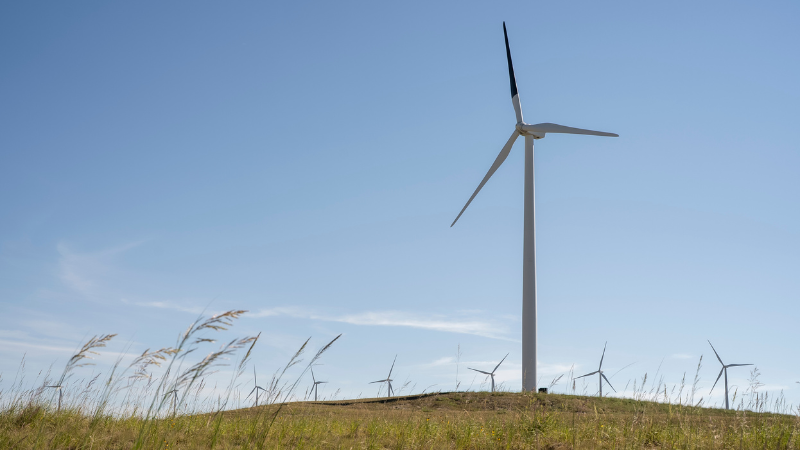PacifiCorp moving forward with study on bird safety near wind turbines

GLENROCK, Wyo. – PacifiCorp and its research partners are moving forward with a highly anticipated and ambitious study to evaluate the effects of painting a single wind turbine blade in black on 36 different turbines to reduce collision risks to birds flying near the wind turbines.
“This is an extraordinary partnership of scientists, federal regulators, wildlife managers, a nongovernmental organization, academia, developers and utility companies working together to find solutions to reduce the impacts of critical electric infrastructure on birds,” said Travis Brown, director of compliance and permitting for PacifiCorp. The Glenrock, Wyoming, study is being supported through a public-private partnership that includes:
|
|
|
|
|
|
|
|
Thus far, the team has painted 28 blades and will complete the remaining 8 in 2024.
The study will focus on how the painted blades affect fatality rates for eagles, diurnal (active in daytime) non-eagle birds and bats. Experts hypothesize that both eagles and diurnal non-eagle birds can perceive painted blades, resulting in higher turbine avoidance. Recent research in Norway documented a nearly 72% decline in turbine blade-related bird collisions as a result of painting one turbine blade in black. Painting blades is thought to visually disrupt what otherwise may appear to the bird as a uniform airspace, making the turbine more visible and helping trigger avoidance behavior.
Bats have different visual and auditory perceptions of their surroundings while flying, so the study incorporates a second hypothesis that bats do not perceive painted blades and there would be no change in bat collision fatalities at turbines with painted blades.
“The research team has produced a very innovative approach, allowing them to accurately estimate the benefits of painted turbine blades in the hope of minimizing impacts on eagles and other diurnal birds. PacifiCorp’s facility allows us to study this interaction at an impressive scale, with 36 painted turbines and even more control turbines to include in the experiment. We’re honored to be part of the team and excited to see the results as the study progresses,” said Shilo Felton, senior scientist at the Renewable Energy Wildlife Institute.
“If proven effective, the manipulation could reduce bird fatalities at wind facilities that would be realized over decades, with minimal maintenance, infrastructure or other constraints required of current technologies,” said Brown.
There has been widespread support in the U.S., as evidenced by this study by PacifiCorp and its partners, to replicate the Norway study with more treated turbines to confirm if similar results can be reached at other wind energy sites.
In 2021, the Oregon state legislature looked to Oregon State University to identify a project that would evaluate the effectiveness of painted blades on wildlife collisions.
“The timing of the legislature’s interest and the engagement of PacifiCorp could not have been better! We have a diverse and well-rounded scientific team tackling this important question, and OSU is proud to be a partner,” said Christian Hagen, associate professor at Oregon State University.
Oregon is one of the country’s top producers of wind energy and has a vested interest in reducing wildlife collisions with wind turbines.